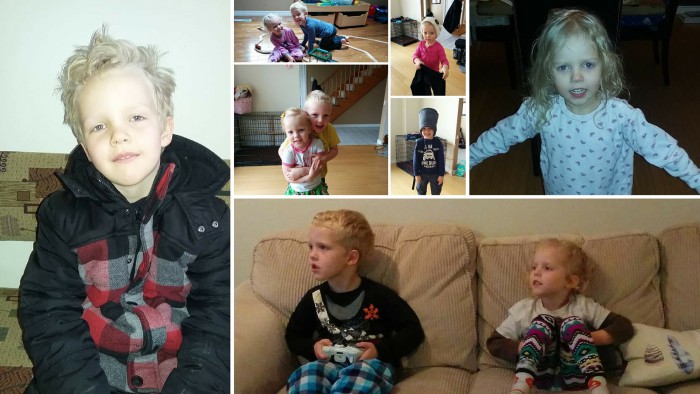Unless you’ve been hiding under a social media rock recently, you probably know about Twitter removing their share counts.
This meant that, as of November 20, any blog posts that had some form of Twitter sharing button (native or third-party) would no longer be able to show how many times that post had been shared on Twitter.
Cue content marketers and social media sharing companies decrying the move, with dramatic quotes about it “being the death of Twitter”.
#SaveOurShareCounts Tweets
Because, yes, Twitter has nothing more serious to worry about than whether or not it shows share counts…
For the rest of us, it didn’t mean as big a deal. At the end of the day, a share count is simply one metric of a blog post’s “success”.
Given there are enough shady companies and scripts out there that can artificially inflate these numbers, it’s not even a great metric.
Personally, I’d rather go by engagement, reactions (as in discussions and thoughts elsewhere), and growth (either subscribers, readers or share of voice) as metrics that matter.
But it made me wonder – with so many people getting up in arms about a little number, what would they actually feel like if you removed the option to share via on-site buttons altogether?
And so I’m going to find out.
To Quickly Share or Not to Share
Last year, I read a post from a few other bloggers who were discussing the value of social sharing buttons, and whether they helped or hindered sites.
One of the best articles I read was from Sam Solomon, called Why I’m Done With Social Media Buttons.
Sam’s main premise was from a designer’s angle, and how sharing buttons could ruin the user experience.
Yet he also shared a couple of case studies that looked at on-page sharing, and the results weren’t great.
While he admits that he didn’t do any real conversion tracking on his own site before switching off, his points around the topic are very valid, and worth the read.
His closing argument has remained with me since reading his post:
If people really love your content, they’ll share it.
And it’s true.
Yes, having on-page buttons may make it easier – but then do they take away from other calls to action that you’re trying to achieve (comments, subscriptions, etc)?
For example, this company saw conversions increase when they removed their share buttons, which is clearly a more important metric than how many tweets they got.
But perhaps that shouldn’t come as too big of a surprise – it’s simply following the golden rule of marketing: that you have one main CTA and that’s your primary KPI (key performance indicator).
You then set secondary CTAs and KPIs based on the key one – but only if they don’t jeopardize your main one.
If you take this to your blog, your core CTA might be to get a comment. Or it might be to get a subscriber. Or to download an ebook, or something similar.
I’m going to hazard a guess that these will come before social sharing. So are we diluting our goals by the [apparent] importance on social sharing buttons?
Time to find out.
Setting 30 Days Comparable Metrics
If I look at my Google Analytics, I can see how much social traffic means to my blog.
In the last 30 days, my breakdown has been as follows:
 Organic search – 58%
Organic search – 58%- Direct – 22.3%
- Social – 9.5%
- Referral – 9%
- Other and email – 1%
Just looking at that simple pie chart, I can see that – in the grand scheme of things – social isn’t a huge part of this blog’s traffic.
While 10% might mean X amount of visits, I tend to find the bounce rate (how soon someone leaves a page) higher for social traffic than search or direct.
Additionally, if I look deeper into my social analytics, I can see that both Facebook and Twitter are the key social drivers – Twitter accounts for 31% of social traffic, Facebook accounts for 29%.
That’s almost 2/3 of all my social traffic coming from just two networks.
So, truth be told, for this particular blog, maybe social isn’t a key driver of visits, even though I’ve continuously made it easier to share with ever-improved social sharing options.
Of course, the argument could be made that perhaps the content just wasn’t shareworthy. In which case, get off my lawn! 
One thing I do find interesting (and another reason for this experiment) is that when I look at both my Google Analytics as well as Share Tally, I can see there are a solid number of shares from Buffer and Pocket.
These are two platforms that my current social sharing solution doesn’t support – which suggests that readers are still happy to cut and paste a blog post’s URL onto their preferred platform of choice.
Well, I guess I’m about to find out.
For the next 30 days, I’m not going to enable on-page sharing for the posts I publish.
Instead, whenever a reader enjoys a post and wants to share it, they’ll need to grab the URL and paste it directly into Twitter, or Facebook, etc.
If they do, great. If they don’t, well, maybe great, maybe not – I guess we’ll see based on traffic comparisons as well as network activity.
Either way, I’m interested to see how removing share buttons impacts the shareability of this blog.
Let the fun begin!
Powered by WPeMatico







